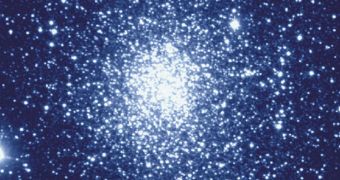While investigating the central regions of the Milky Way using an interferometer telescope, astronomers were able to detect traces of stellar fossils that appeared to have been produced by what could best be termed as cosmic intruders.
These objects most certainly did not originate inside the galaxy, astronomers say. They were most likely either picked up as the Milky Way was traveling through space, or engulfed as the dwarf galaxy they were in was cannibalized by ours.
We currently live in a cosmic structure that is 100,000 light-years in diameter, and which contains anywhere between 100 and 400 billion stars. Though not the largest in the Universe, ours is among the biggest and most massive galaxies around.
According to experts, it couldn't have possibly gotten so big without incorporating other galaxies it stumbled upon into its ranks. When this theory was proposed, critics cited a lack of evidence as their primary argument against the new theory.
The new discoveries, made with the Very Large Telescope (VLT), provide an addition to the stack of evidence that scientists compiled in the mean time. The La Silla, Chile-based VLT is operated and managed by the European Southern Observatory (ESO).
Experts operating it discovered a massive blob-like structure containing tightly packed stars near the core of the Milky Way. The agglomeration of cosmic fireballs numbers at least one million members.
In-depth studies of the cluster, dubbed Terzan 5, revealed that each cubic light-year of space in this structure contains about 10,000 stars. The distinct light signatures of both old and young stars was discerned using the ESO instrument.
The main theory explaining this cluster's existence is that it started off as a dwarf galaxy outside the Milky Way. The original structure was most likely a lot larger then than it is today, in the sense that its million stars were spread more widely apart, Daily Galaxy reports.
This discovery is very important for supporting the theory that massive spiral galaxies grow through mergers, collisions, accretion, stellar nursery outputs and cannibalization of smaller galaxies.
Over billions of years, their size and mass grows sufficiently for them to catch on the aspect the Milky Way has today, experts conclude.

 14 DAY TRIAL //
14 DAY TRIAL //